Cats are animals that are part of the mammal family, bringing together small, medium and large species.
With a wide geographic distribution, felines are known for their hunting ability, in addition to being obligatory carnivores.
Feline Characteristics
Cats have characteristics that are common among species:
- It has long, curved claws;
- The nails are retractable, that is, the animal chooses to keep them retracted;
- The front legs have 5 toes while the hind legs only 4 toes;
- They have a heightened sense of smell and hearing;
- Feature enhanced night vision capability;
- They have a flexible spine, allowing them to climb trees with ease.
It is noteworthy that felines can be classified as domestic or wild. In a historical context some felines were domesticated, which currently happens only with the cat.
Cat species
See below a list with 10 species of cats.
1. domestic cat (Felis sylvestris catus)
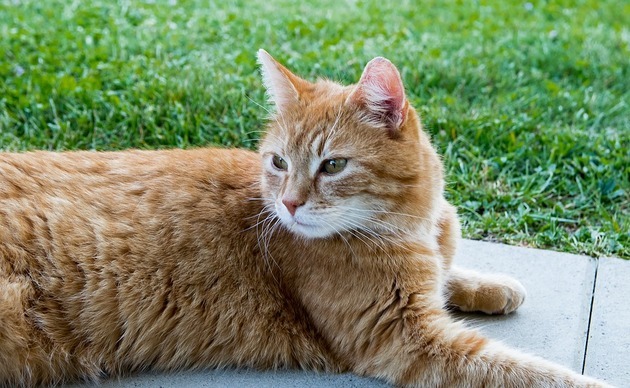
The domestic cat is one of the most popular felines and is very common as a pet. It has approximately 250 species of this small feline.
Its food consists of small animals, especially rodents, birds and reptiles.
Its average lifespan is 15 years, its weight varies according to the species, reaching up to 7 kilos.
With nocturnal habits, cats tend to sleep more than other animals, between 13 and 14 hours a day, especially as a way to conserve energy.
His independent and lazy behavior is one of his main characteristics, even inspiring characters from different films such as Garfield, Puss in Boots and Cat Felix.
2. Asian leopard cat (Felis Prionailurus bengalensis)

The Asian leopard cat is a species of feline that lives mainly in Southeast Asia and the Indian subcontinent. It takes its name due to its physical resemblance to the leopard, but it belongs to different genera: while the leopard cat is of the genus Prionailurus, the leopard belongs to the genus panthera.
Very similar to the domestic cat, the leopard cat can measure up to 45 cm, about 20 cm in tail and weigh up to 7 kg.
With long, sharp nails, it can climb trees easily, usually in search of food, such as rodents and birds. In addition to these animals, it also usually feeds on small animals such as reptiles, amphibians and hares.
It is an animal that, so far, does not present a risk of extinction, however, animal protection institutions emphasize that if there is no control over the trade of this animal, it can become threatened.
3. Ocelot (Leopardus sparrow)
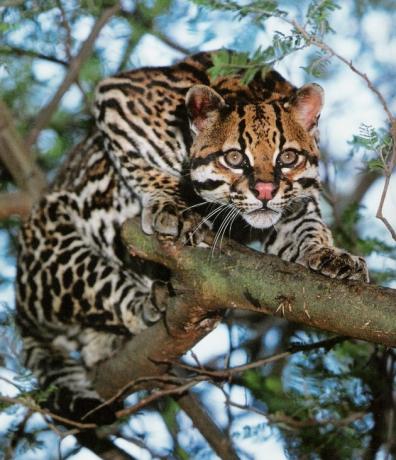
THE Ocelot is a feline that can be found in Brazil, as its habitat is usually tropical florests, subtropical, savannas and mangroves.
With an appearance similar to other cats, especially the jaguar, the ocelot has short, golden or light gray fur and several black spots distributed throughout the body.
It is considered a medium-sized feline, measures about 50 cm and can weigh up to 15 kilos.
The feeding of this feline varies between birds, rodents, rabbits and reptiles. The life expectancy of an ocelot that lives in its natural habitat is about 10 years and in captivity it can reach 20 years.
It is a feline that normally starts its hunting activities at the end of the day and beginning of the night, but in rainy and cloudy periods it can be found active during the day.
4. Lion (panthera leo)
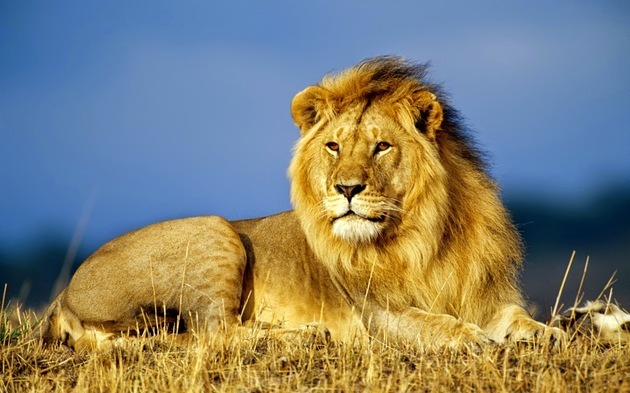
O Lion is a feline known for its aggressive, domineering and fearless behavior, which is why it receives the reputation of "king of the jungle". Its natural habitat is the Sub-Saharan Africa and Asia, where it is already at risk of extinction.
Considered a large feline, the adult lion can reach between 1.80 and 2.40 meters and weight ranging from 170 to 190 kilos. Their fur can vary in color from light yellow to dark brown and have a characteristic mane that develops over time.
A male lion needs an average of 7 kilos of meat per day, while the female is satisfied with approximately 5 kilos.
In some periods the hunting can present an irregular rhythm, causing the lion to often stay a few. days without food, but at a time of abundant hunting, food intake can reach 30 kilos in a single turn.
Due to its aggressive behavior, its food is based on hunting other animals, such as zebras, deer, antelopes and giraffes.
See also:
- Endangered animals in the world
- Endangered species
5. Leopard (Panthera Pardus)
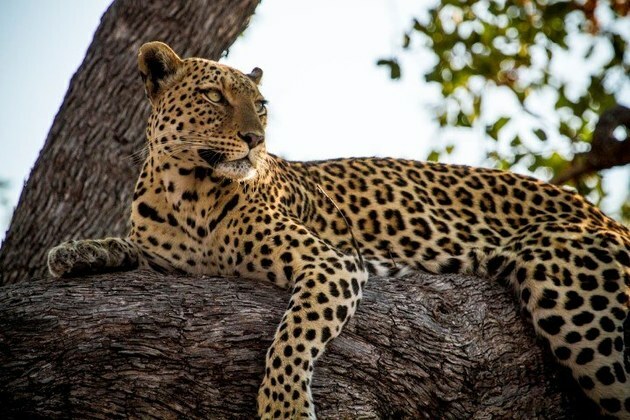
The leopard is one of the cats that originates in the regions of Africa and Asia. It presents between 1.30 and 1.65 meters in length and approximately 65 centimeters in height. Its weight can vary between 30 and 90 kilos, depending mainly on food.
It is an agile feline, so one of its most striking features is the quick hunting of its prey, which is usually impala and wildebeest, typical animals that live in the savannas.
It is a very strong animal, which can carry animals weighing up to 6 kilos more than yours. In addition, it usually carries its prey up trees in order to get out of reach of other predators, especially lions and hyenas.
The leopard and the jaguar are very similar physically, especially due to the yellow colors and black spots all over their bodies, as well as the shape of their head.
The difference between them is in the pattern of fur and in the shape of the spots, while the leopard has small and dark spots, the jaguar has the spots in the shape of rosettes.
The shape of the head also distinguishes them, where the leopard has a smaller and slender head, the jaguar has a sturdier head.
Also read about:
- The 10 biggest predators in the animal kingdom
- Predatism
6. Iberian Lynx (lynx pardinus)
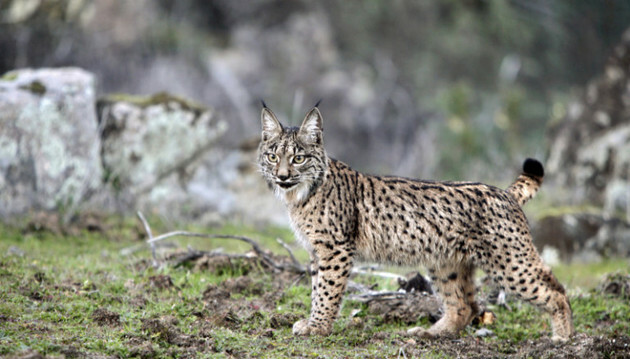
The Iberian lynx is a typical animal of the Iberian Peninsula and is considered the most endangered feline.
It has a head smaller than the body, which in turn has light yellow hairs with small scattered black spots. It also has hairs on the ears and a kind of hair collar, which resembles a beard.
Measuring between 85 and 110 centimeters, bobcats have short legs and tails, which in turn can reach 30 centimeters in length. The male usually weighs between 13 and 27 kilos, while the female has an average weight of 10 kilos.
Considered a solitary species, bobcats usually hunt animals such as rodents, birds, reptiles, amphibians, deer and even ducks. Hunting is carried out gradually, as the lynx tends to chase its prey slowly so that it is at a short distance so that the attack can be made in a few steps.
7. Jaguar (panthera onca)
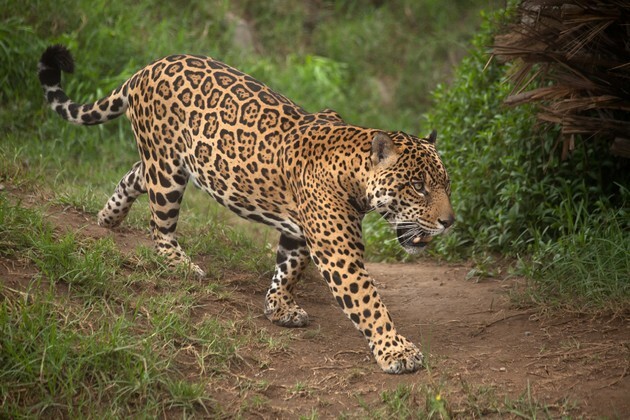
THE Jaguar is the feline that can be found in Brazil, as its habitat encompasses the American continent, thus making this animal is seen from the south of the United States to the north of Argentina, thus including Brazilian regions such as the Pantanal, Amazon and Thick.
In some places the species is already extinct, but due to its wide distribution it is considered an animal classified as "almost threatened".
Its appearance is striking, especially due to its golden fur and its well-defined black spots, its rounded and robust head, in addition to its large paws.
It is one of the big cats, weighing between 56 and 92 kilos and ranging in length from 1.10 to 1.85 meters.
It is a solitary animal and a very important predator in the food chain, mainly because there is no restriction, as it eats what is possible to hunt.
You may also be interested in:
- Animals of the Cerrado
- Pantanal Animals
- Amazon Animals
8. Black Panther

The black panther is a variation of the jaguar, the difference being in the color of the fur.
The black color is caused by the gene responsible for the distribution of the black pigment inside the hair, that is, it represents an excess of melanin.
According to the luminosity, it is possible to see that the characteristic jaguar spots remain on the black panther.
For hunting, having a single color, the camouflage becomes more difficult than having different colors.
9. Puma (Puma concolor)
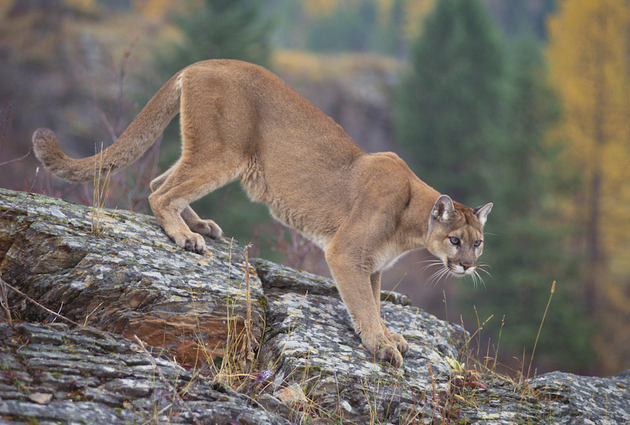
The puma is a feline native to America that may also be known as a puma or puma. Found in several environments, making it the terrestrial mammal with the greatest geographic distribution in the West, passing through places with tropical weather, deserts and subarctic.
The puma can measure up to 1.55 meters in length (without the tail) and its weight can reach 72 kilos. Its coloration and lack of spots on the body distinguish it from other cats, its color is usually grayish.
More active at night, the puma lives alone and is considered an opportunistic predator, not limited to a group of prey.
In some places it has already been extinct, the main cause being hunting for sport or retaliation for attacks on cattle, in addition to habitat destruction.
10. Tiger (tiger panther)
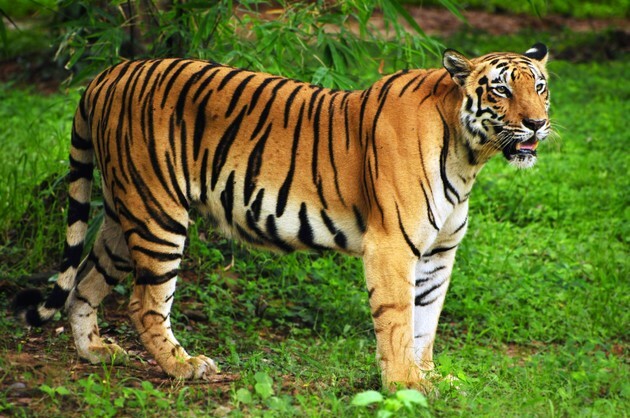
O tiger it is one of the biggest cats in the animal kingdom. Considered imposing, with strong claws, nails and sharp teeth, this animal has as one of its most striking characteristics its aggressiveness when hunting and defending.
Its size can vary between 1.40 and 2.60 meters, not counting the tail that can reach more than one meter. Its weight is approximately 200 pounds.
The golden coat and black stripes distributed over the body are unique, that is, it is the form of identification of each animal.
Tigers are animals that are rarely seen in groups, as they live alone or with their young. In hunting situations, if another tiger appears, the prey is shared.
The animals most hunted by tigers are leopards, turtles, crocodiles and even other tigers.
They are typical Asian animals, especially in countries like Russia, China, Malaysia, Thailand, India and Vietnam. Three species of tigers were extinct, namely: bale tiger, Java tiger and Caspian tiger.
You may also be interested in:
- Extinct animals
- Extinct animals in Brazil



